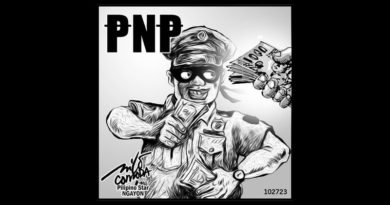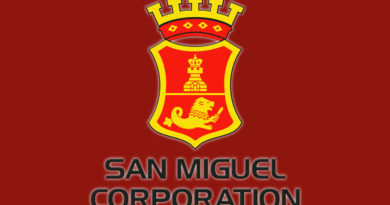Vientiane, Laos : When visiting Laos, don’t forget the capital
Welcoming Visit Laos Year 2018, Vientiane Times publishes a series of feature articles and
photographs inviting you to experience the authentic nature, culture, history and hospitality of
South-East Asia’s Simply Beautiful Laos.
.
This article will introduce you to Vientiane and the interesting and authentic places of this beautiful and charming capital city.
Vientiane is located on a curve of the Mekong River in central Laos. It has a total area of about 3,620 square kilometres with a population of more than 800,000.
It has nine districts: Chanthabouly, Sikhottabong, Xaysettha, Sisattanak, Naxaithong, Xaythany, Hadxaifong, Sangthong and Pakngum.
An important strategic location, Vientiane is the heart of the country’s development as well as the centre for national governance, politics, culture, tourism, science, economics, and international trade and services.
Vientiane’s Gross Domestic Product (GDP) grows by an average of 11 percent a year with per capita income now reaching US$5,150.
This year, Vientiane authorities aim to expand the capital’s economy by 11 percent and expect GDP to increase by 41.6 trillion kip, according to Vientiane Planning and Investment Department figures.
The number of tourist arrivals in 2016 was more than 1,578,000, and the number forecast for this year is 1,700,000 and for 2018 it’s 1,800,000, according to the Vientiane Information, Culture and Tourism Department.
Vientiane has abundant visitor attractions including natural, cultural, and historical sites as well as other interesting places.
There are more than 13,300 rooms (2016 figures) in hotels, apartments, guesthouses, and resorts.
It has a long history involving a beautiful culture and fine traditions, and your explorations will teach you about Laos’ unique culture, architecture and history.
Deputy Head of the Tourism Division, Vientiane Department of Information, Culture and Tourism, Mr Phousone, said Vientiane would launch Visit Vientiane Year during this year’s That Luang Festival, with various exhibitions and activities promoting culture and tourism. Visit Laos Year will take place nationwide in 2018.
Mr Phousone invites you to visit this simply beautiful capital and roam freely through its streets, temples and markets.
Pha That Luang Stupa (Great sacred golden stupa and national symbol)
Pha That Luang Stupa is a sacred golden stupa that is the national symbol of Laos. The stupa is located in That Luang village, Xaysettha district, in the city centre.
This stupa was originally built in the 3rd Century, at the same time as the establishment of Meuang Vientiane. The stupa was built to house bones belonging to Lord Buddha. Visitors can see some very old intricate architecture and carvings and can learn about the stupa’s origins.
Every November, a colourful festival, the That Luang Festival, is staged to celebrate and honour the stupa, which is the most revered in Laos (this year it will take place on November 3). Visitors can enter the stupa daily, either to wander around or to pray.
Sisaket Museum
Sisaket is the national museum and is a part of Vat Sisaket temple. This temple was built in 1818, during the reign of King Anouvong, the last ruler of the Lao Lane Xang Kingdom. The museum houses various sizes of Buddha images. These wood, stone, and bronze images mainly date from the 16th and 19th centuries. Various stone inscriptions explain the history of the temple, the ancient Lao kingdom, and its characteristic architecture. Sisaket Museum is located on Setthathirath Road in Chanthabouly district.
Hor Phakeo Museum (Emerald Buddha Hall)
Hor Phakeo Museum was formerly a royal temple and was built in 1565 by the command of King Xaysetthathirath to house the famed Emerald Buddha.
The ancient temple also served as King Xaysetthathirath’s personal place of worship. Upon entering, you can see an attractive building in traditional architectural style, old Buddha images, ancient objects and stone inscriptions.
It is on Setthathirath Road, opposite the Sisaket Museum.
Patuxay Monument (Victory Gate)
Patuxay Monument is a major visitor attraction. It is located in the city centre and is almost one kilometre from Sisaket and Hor Phakeo museums and can be comfortably reached on foot. Patuxay was built in 1962 and is richly embellished with Lao designs. The huge concrete structure resembles the Arc de Triomphe in Paris. Nowadays, the surrounding small park is used as a place of leisure by the people of Vientiane. The seventh floor of the monument provides an excellent viewpoint over the city. Some of the floors are used for selling souvenirs such as handicrafts, wooden items, T-shirts, and other goods. It is located at the northeastern end of Lane Xang Avenue.
Buddha Park
Its full name is the Xieng Khuan Buddha Park and it is famous for its large collection of stone Buddhist and Hindu sculptures that are a monument to one eccentric man’s quite bizarre ambition. More than 200 statues of a religious nature can be viewed and visitors can learn about their stories.
The site was designed and built in 1958 by Luang Pou (Venerable Grandfather) Bounleua Soulilath, a yogi-priest-shaman who merged Hindu and Buddhist philosophy. The concrete sculpture pieces at Xieng Khuan (which means Spirit City) include statues of Shiva, Vishnu, Aruna, Avalokiteshvara, Buddha and numerous other deities, all supposedly cast by untrained artists under Luang Pou’s direction. The builder imagined and created dramatic symbols of heaven and hell. The park is located by the Mekong River in Xieng Khuan village, Hadxaifong district.
It is easy to get here just by riding a motorbike along Thadeua Road towards the Lao-Thai Friendship Bridge. Carry on past the bridge for a few more kilometres and you will see the park signed on your right hand side.
Museums and Memorials
There are many museums and memorials for you to visit and learn about history of Laos and its people and their development. These include the Lao National Museum, located opposite the National Culture Hall, on Samsenthai Road, Chanthabouly district; and others along Kaysone Phomvihane Road in Xaysettha district including the President Kaysone Phomvihane Memorial in Chommany village, Memorial of President Souphanouvong in Phonsa-art village; and the Lao People’s Army History Museum opposite the People’s Security Museum which are both in Nongsangthor village.
Waterfalls
Tad Moun waterfall: This waterfall is located in Sikhottabong district and is closest to the city centre. It has been developed by a local investor and consists of several areas: Tad Moun 1 and 2, Tad Palay, Tad Vangnong 1 and 2, and Tad Vangnampheuak.
Hin Khanna waterfall: This waterfall is located in Naxaithong district and can be reached by driving along Road No. 13 North to Km 15 where you will see a sign to the waterfall pointing to the left.
Tad Xon waterfall: Tad Xon is located in Naxon village, Naxaithong district, and has a large channel that directs the cascade of water pouring down the rocks from higher ground. To get there, take Road No. 13 North to Huakhua village – a distance of about 20 km. This area has many big trees and is a very good place to relax in a modern hut or take an elephant ride.
Nam Xuang reservoir: This reservoir is located in Sivilay village, Naxaithong district. Take Road No. 13 North to the 38 km marker where you turn left onto an asphalt road. Continue for a further 2km to get to the reservoir. Here, the water flows through a channel formed by rocks and is a great spot to cool off.
Tad Vangluang waterfall: This waterfall is located in the Vernkabao area of Pakngum district. It opened to the public last year and is currently very popular, attracting at least 1,000 people at weekends.
National Ethnic Cultural Park: This park is located on Thadeua Road in Dong Phosy village, Hadxaifong district, about 20 km south of the city centre, near the Lao-Thai Friendship Bridge I. The park features cultural exhibits, statues of Lao literary heroes, models of traditional Lao houses, a zoo, children’s playground and a restaurant with relaxing seating along the banks of the Mekong River.
Shopping Centres and Markets
The main shopping centres and markets are Talat Sao Mall (Morning Market), Vientiane Centre, Asean Mall, Lao-ITECC Mall, and the night market at Chao Anouvong Park alongside the Mekong River.
Vientiane has also many more interesting places including sacred and beautiful temples such as Vat Ong-teu, Vat Inpeng, Vat Simeuang, and the City Pillar.
Courtesy: By Vientiane Times
(Latest Update September 23, 2017)
.
FOLLOW US ON FACEBOOK & TWITTER |
NOTE : All photographs, news, editorials, opinions, information, data, others have been taken from the Internet ..aseanews.net | [email protected] |
For comments, Email to : [email protected] – Contributor 









